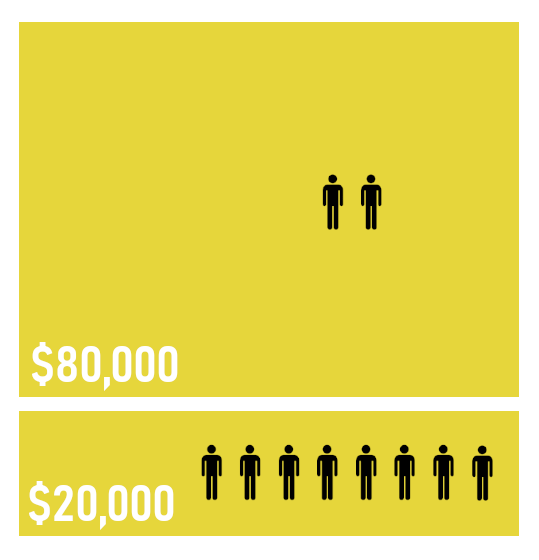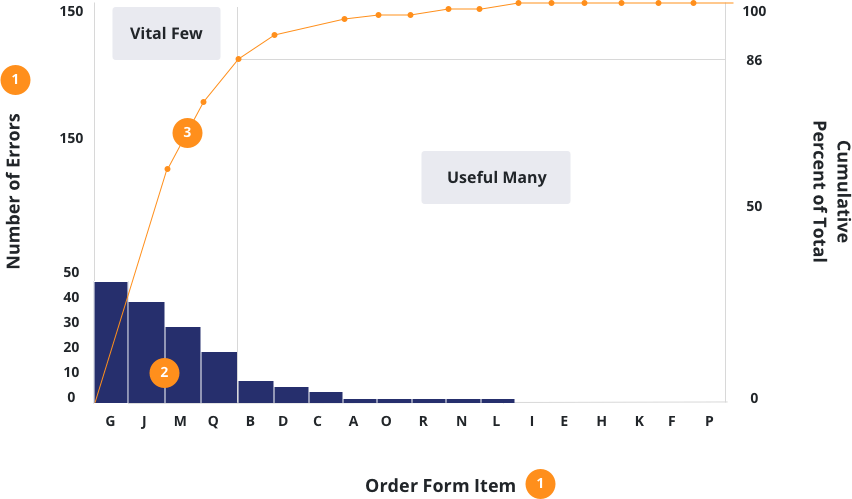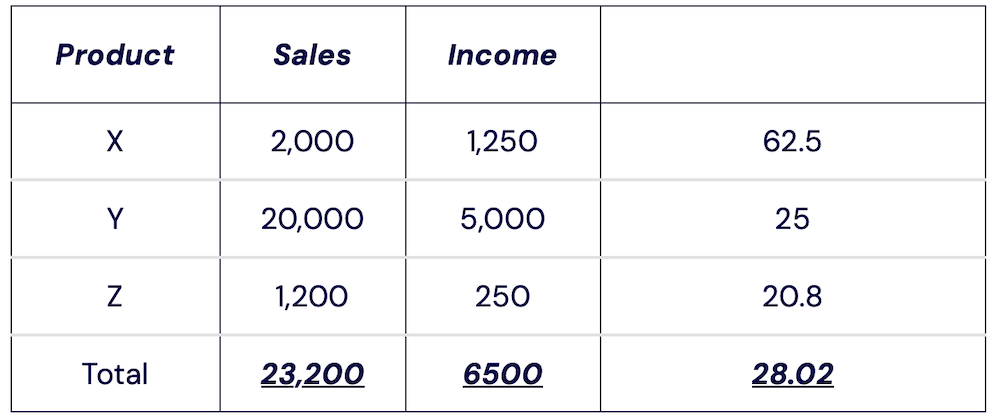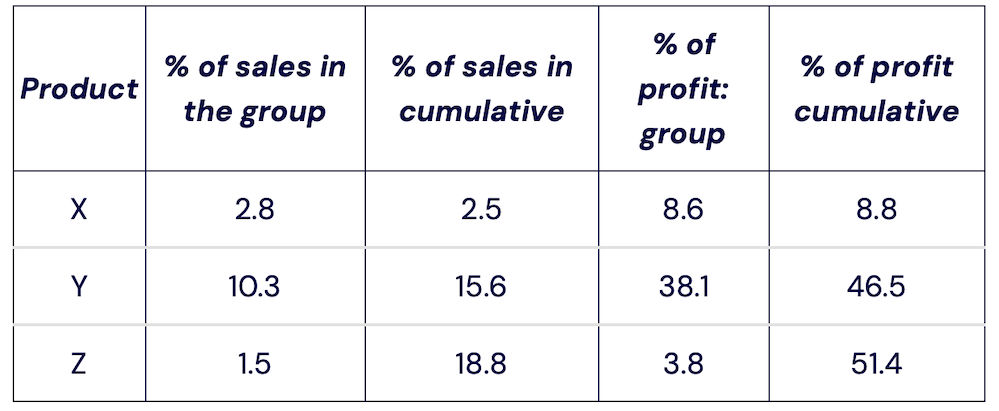The Pareto Principle (80:20 rule) in customer success represents that 80 per cent of your revenue is from 20 per cent of repeated customers or loyal customers. Chances that you have heard about the 80:20 rule (or the Pareto Principle). The Pareto principle is also called the law of the vital few. The idea is- 80% of the effect is produced from 20% of the cause of the event.
In 1906, Vilfredo Pareto from Italy made an observation that nearly 80 per cent of Italy’s land was owned and controlled by nearly 20 per cent of the population. This finding led him to explore other countries where he noticed similar situations. This principle has then been applied to various spheres like software, business, marketing, and more. In marketing, the Pareto principle says that 80 per cent of your sales are represented by 20 per cent of your customers. If companies break free from this, they will increase profits.
So, how does this fit with Customer success? What is the Customer Success Pareto Principle? That is what we will find out in this post.

Customer Success from The Pareto Principle
A well-known customer success law, the Pareto principle says that repeat customers generate revenue that is nearly 16 times more efficient than one-time customers. The potency of 80/20 is that 20 per cent of a group is responsible for 80 per cent of the sales. So, if you can retain customers or make them more than one-timers, the chances of revenue earned is higher.
For example, 20 per cent of repeat customers are responsible for 80 per cent of revenues. Their revenue efficiency is 80/20 = 4.
For 80 per cent of one-time customers, the contribution to the revenue is 20 per cent. Their revenue efficiency is 20/80 = 0.25
This stresses on the importance of customer retention and customer loyalty. Customers have the power to maximise profitable income and minimise the misuse of investments and assets. Here are some points every company must consider before making any decision.
Number of Customers: How many customers constitute the 80 per cent and how many the 20 per cent? This will be useful in determining if the customer base is increasing or shrinking.
Relevancy: Knowing where your customers are most likely to buy (therefore want, like, desire, need most) is essential. This helps understand the potential for growth in specific geographic locations.
What do they buy: Understanding what customers buy and why is also helpful. This will improve profit outcomes. Ai data analysis, or better still autonomous capture and application of that data for hyper-personalisation of communication to nurture the appropriate effect delivers by far the greatest returns. statistics supported by Statista, Forrester, McKinsey et al.
Every customer contributes to the market share. The size of the organisation is what affects the market and helps find scope for investment. It is important to keep the Pareto principle in mind while not faltering in keeping customers retained.

80/20 The Pareto Principle Rule of products stocked
80/20 is highly successful for businesses and organisations. Find out which 20 per cent of your products are contributing to 80% of sales or profits. Keep improving on the marketing, sales, and development of these products. You can amplify the sales of these products to get better profitability. Compare how data looks and draw insights from it.
80/20 Rule by Customer Types/Groups
Of your repeat buyers which 20% are responsible for 80% of repeat purchases? Re-connect with them. Consider finding out what made them leave. Focus on nurturing your relationship with them. Which states or nations do most of your sales come from? Does it make up 80%? Of the region? Improve marketing efforts there.
Early adoption of technology which nurtures this perpetually throughout their lifetime by the Diffusion of Innovation Theory is equally essential to your ecommerce success, while the laggards suffer the greatest and lose the most to their peers.
80/20 Rule for Upsells and Renewals in Customer Success
When applied correctly, the Pareto 80/20 rule makes it simpler to think.
Let us assume that your company offers three distinct subscriptions. Graph this out against Sales per product type vs. Profits to bring it into view for a clearer picture. discover which subscription is the most popular. This is how the Pareto principle works in customer success.
Put this to further use by tabulating the Sales for the preceding month, subtracting all costs from profits, and then filtering the information according to Return on Sales (i.e. Profit/Sales*100%).

In the second table, total the responses along with the cumulative sales percentage for each subscription, the percentage of group sales for each subscription, and the same for profits with the group and cumulative percentages.

From this, you may determine which subscription generates higher profits and which subscription requires a sales increase of twofold. Increasing the final product as a result.
Be aware that this is one method for handling renewals.
Customer segmentation is an approach that can be used for growth or upselling. But has been enormously surpassed by hyper-personalisation for the last couple of years.
Think of these usage examples;
Find the 20% of recurring customers who make up the 80% of recurrent purchases.
So, here is what you do, ensure you have a means to contact them away from your website, as they spend 99.999% more time away than on it. Those communications are individual, relevant to each one separately, and the timing of that email is calculated to their preference, not yours.
Calculate how 20% of the total clients account for 80% of the revenue.
You must nurture your connection with them.
Not forgetting to determine which 20% of the clients are responsible for 80% of the complaints, and get rid of them.
We can also move an inordinate volume of the 80% toward the 20% by nurturing them, instead of merely perceiving them as a statistic. AI autonomous Saas solutions weren’t around in Pareto’s time.
The obvious and immediate way to apply the 80:20 rule today
Solutions such as SwiftERM autonomous hyper-personalisation software can be installed today. As a plugin, you need only register and install the plugin on the backend of your platform, from whom it has passed scrutiny, as it has from many installations with results published. The results will be apparent immediately.
Benefits of the 80:20 Rule
- You can maximise the returns available for every customer with limited investment
- You will know your customers better
- Able to deliver the highest ROI content every time
- Develop a greater understanding and appreciation of each customer
- Higher customer satisfaction scores
- Increased net retention
- Clear priorities on tasks
- Solidify your position and surpass your greatest expectations
Bottom Line
The Pareto Principle is powerful and can be applied to any business. The 80/20 rule can be applied to any business to understand profitable income, market share, geographic coverage, and overall costs. This will help understand opportunities for growth and productivity.
Applying the 80:20 rule for customer success will save a lot of time, effort, and resources. However, it is not a method to explain or come to an analysis of an event. It helps us understand what should be focused on for better yield, improved growth, and impact on end goals.
This will help identify what aspects of the business are not at their full potential and why. Using the Pareto Principle in Customer Success will help identify how to optimise customer success operations for overall business growth.





